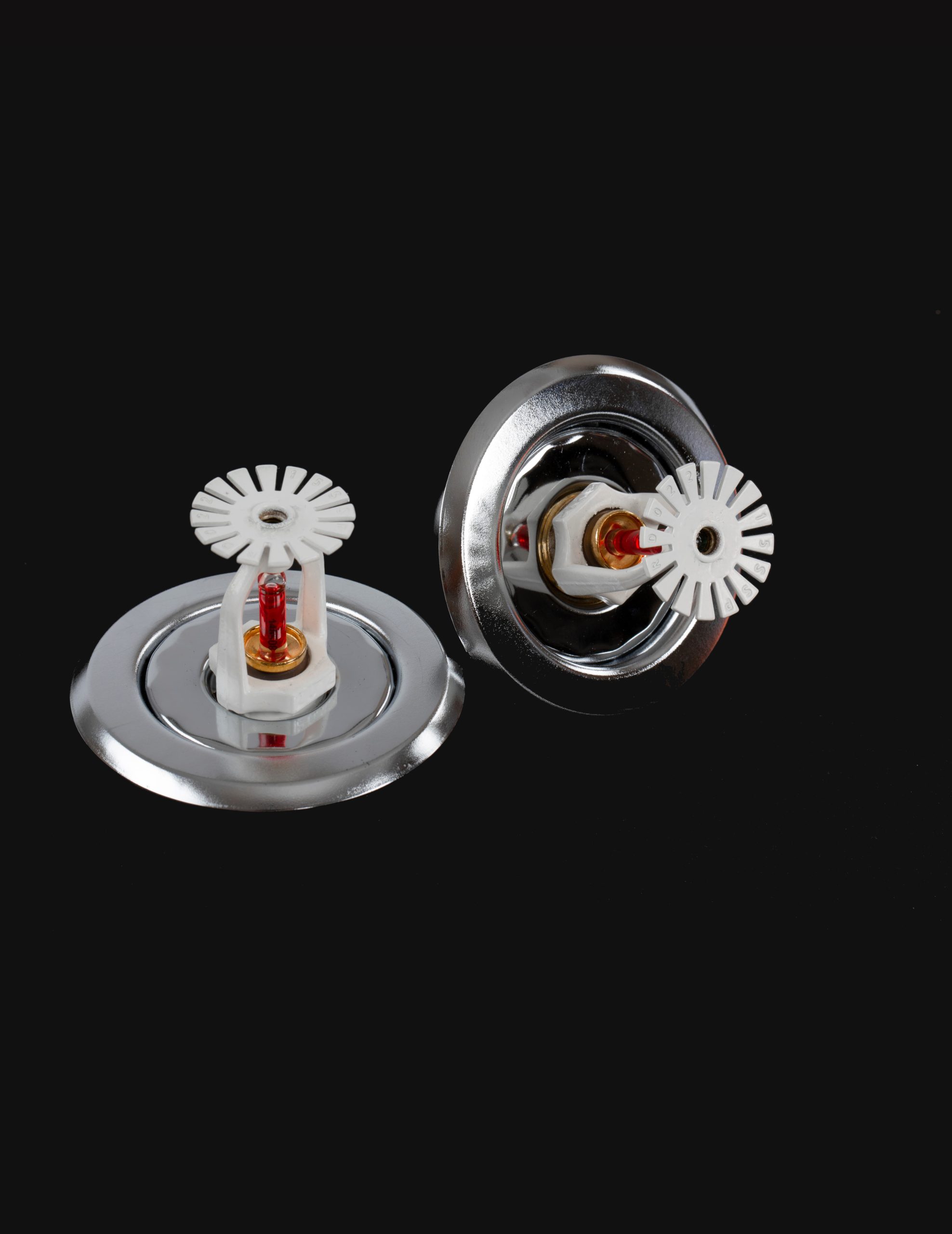
When planning a sprinkler system installation, one of the first decisions the fire safety expert has to make is what type of sprinkler system to install to ensure efficient fire control and compliance with relevant safety regulations. The most common types of fire sprinkler systems are wet, dry, deluge, and preaction, each with its own unique characteristics and applications.
Let’s take a closer look at how these systems operate and the key differences between them.
The first recognized fire sprinkler system was invented back in 1812, and, since then, many new types of sprinkler systems have been created. Today, four types of fire sprinklers are used for most applications, although many more different types of fire sprinklers exist. The main differences between the four types of sprinklers are their method of activation and application.
Wet pipe sprinklers are the most common type of sprinkler used for Toronto buildings. This type of sprinkler system is called “wet,” because the sprinkler piping is filled with water at all times. If the temperature within the sprinkler head reaches a certain temperature, the fusible link or glass bulb inside it breaks, releasing the water to flow out of the sprinkler head.
Wet pipe sprinklers are believed to be the most reliable and cost-effective sprinkler systems out there; therefore, they should be considered for most applications. However, such systems are not appropriate for spaces where there is a risk of temperatures dropping low enough for the water within the sprinkler pipes to freeze.
Dry pipe sprinkler systems are similar to wet pipe ones, except the sprinkler pipe is not filled with water by default. Instead, the water is contained behind a dry pipe valve, typically some distance away from the sprinkler head.
Just like with a wet pipe system, as soon as the temperature at the sprinkler head reaches a certain point, the fusible link or glass bulb inside it breaks. However, the water does not become instantly available, because the pipe is not filled with water. Instead, air is released from the open sprinkler head, causing a pressure drop and, therefore, opening the dry pipe valve and releasing the water.
Dry pipe sprinkler systems are an excellent option for unconditioned spaces or areas where there is a risk of the pipe temperature dropping below the freezing point. However, for such a space, it is still critical to ensure that the portion of the building where the water comes in maintains the above-freezing temperature.
With dry pipe sprinklers, the water flow is delayed after the sprinkler head activation, thus limiting the size of the system. This means that they may not be suitable for larger buildings and areas.
With a deluge sprinkler system, all connected sprinkler heads are open, with no sensing element or glass bulb inside. Because all sprinkler heads are open, the sprinkler piping is filled with atmospheric pressure, with a mechanically-activated deluge valve enabling the pipes to fill with water. The deluge valve is activated by a signal from a fire alarm system consisting of smoke and heat detectors, – once the signal is received, all open sprinklers begin to distribute water.
With deluge sprinkler systems, all sprinkler heads are open and activate at the same time, quickly distributing water over the entire area. As such, these systems are used in areas where there is a concern for a rapid-fire spread, including chemical storage, aircraft hangars, or refineries.
A preaction sprinkler system is likely the most complicated type of sprinkler for firefighting. There are three different types of preaction systems, differentiated by the type of event (or events) that must happen before water is released into the system:
Preaction sprinkler systems require specific conditions to activate. As such, they are frequently used in areas where preventing accidental water discharge is crucial, such as in sensitive environments like data centers or museums.
Without a doubt, each type of fire sprinkler system offers its own unique advantages and disadvantages. The type and size of the property in question, the type of fire hazards within the building, and the specifics of the building’s infrastructure will dictate the choice of the appropriate sprinkler system. At Fire Safety Solutions, we can recommend the right type of sprinkler for your property, as well as install and maintain the system on an ongoing basis. Get in touch with us today to learn more about our fire sprinkler services in Toronto.
Have a project we can help with?
Give us a call or reach out to us on social media.
Head Office
25 Edilcan Drive, Unit #8
Concord ON, L4K 3S4
Cambridge Office
180 Shearson Crescent, Unit 3
Cambridge ON, M1T 1P4